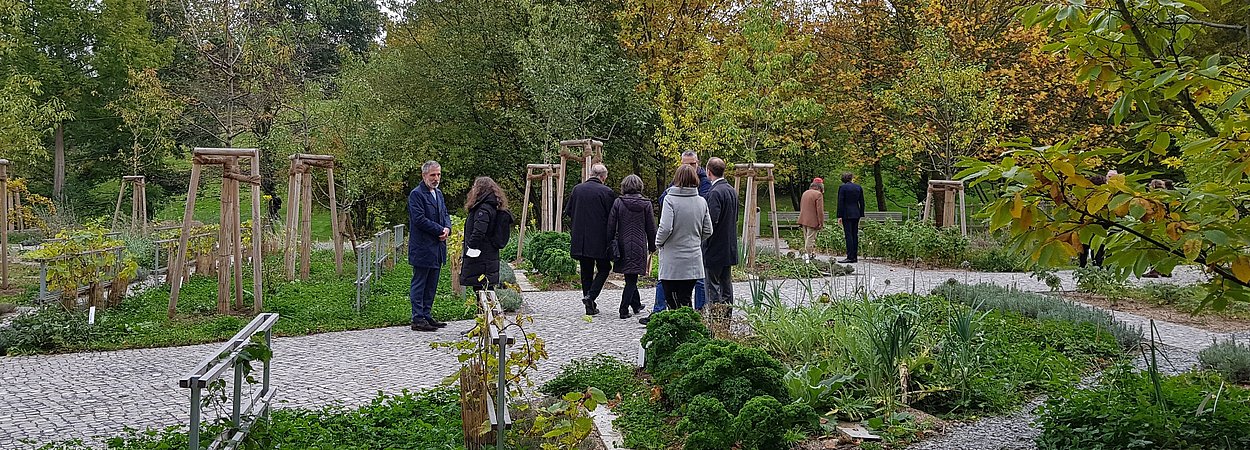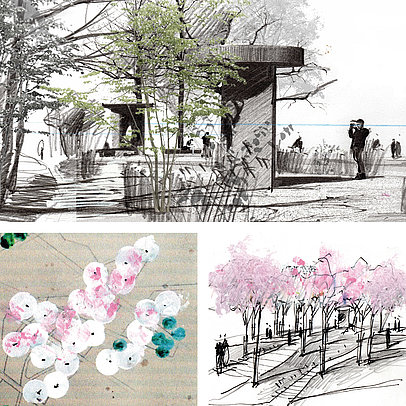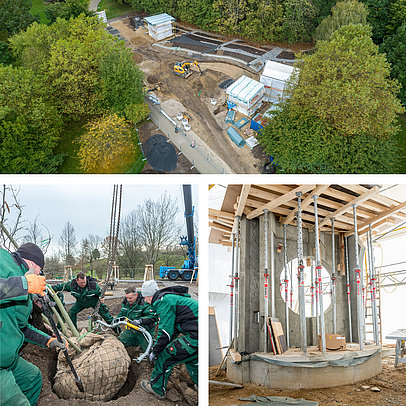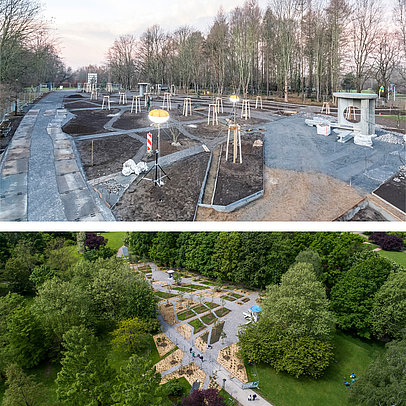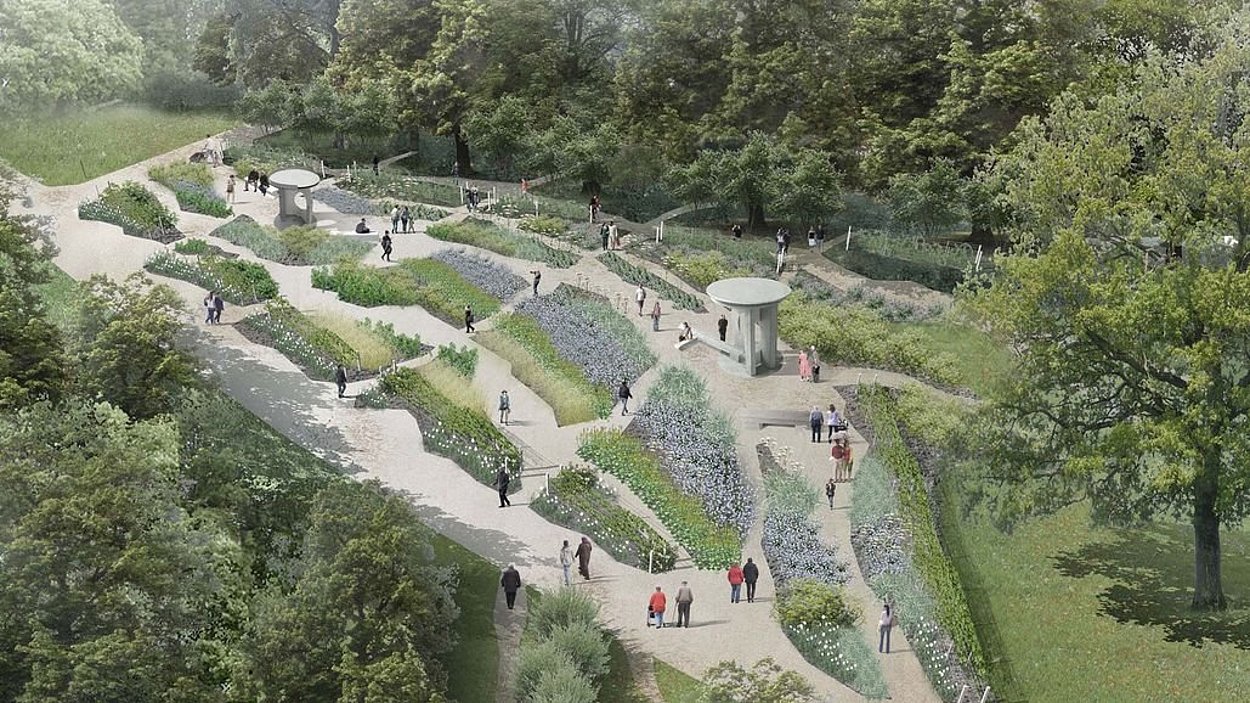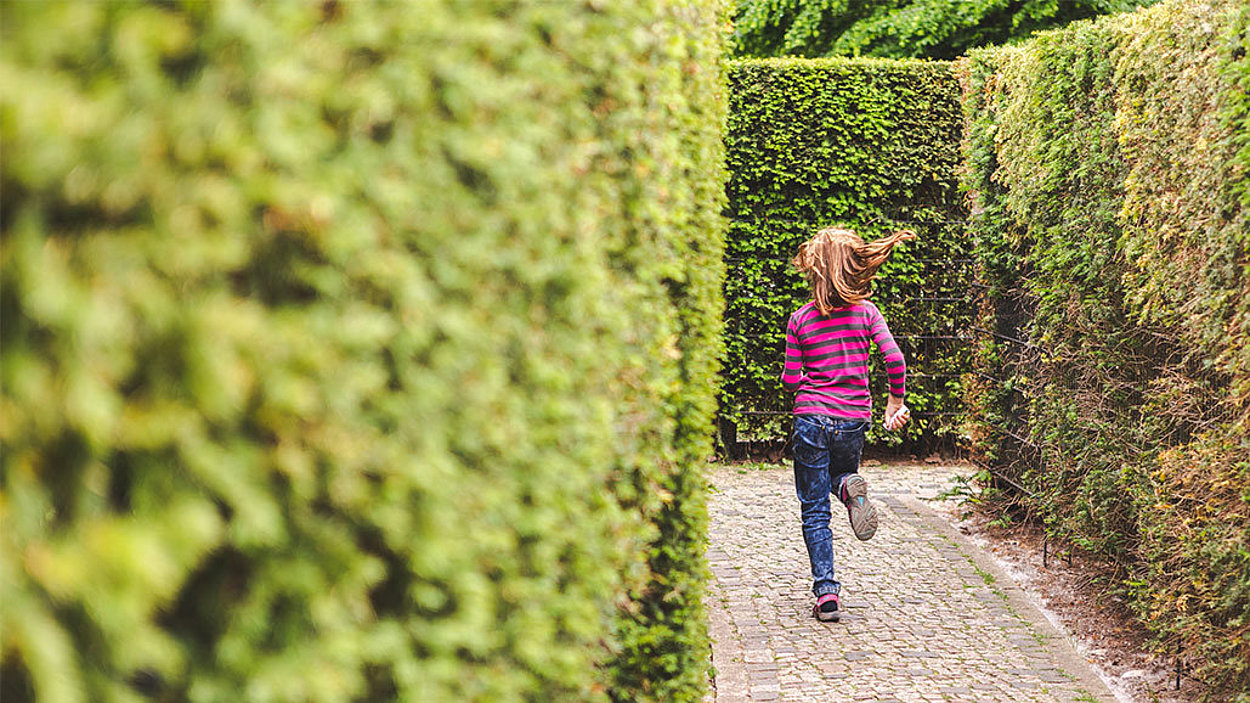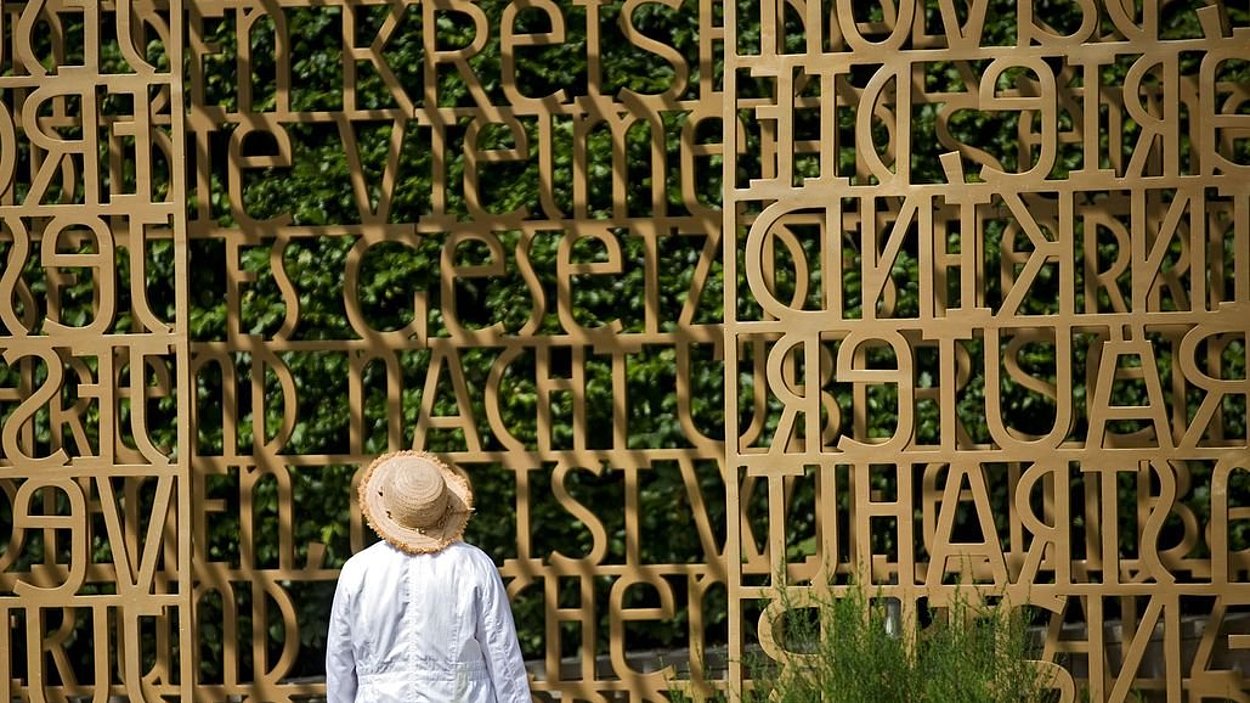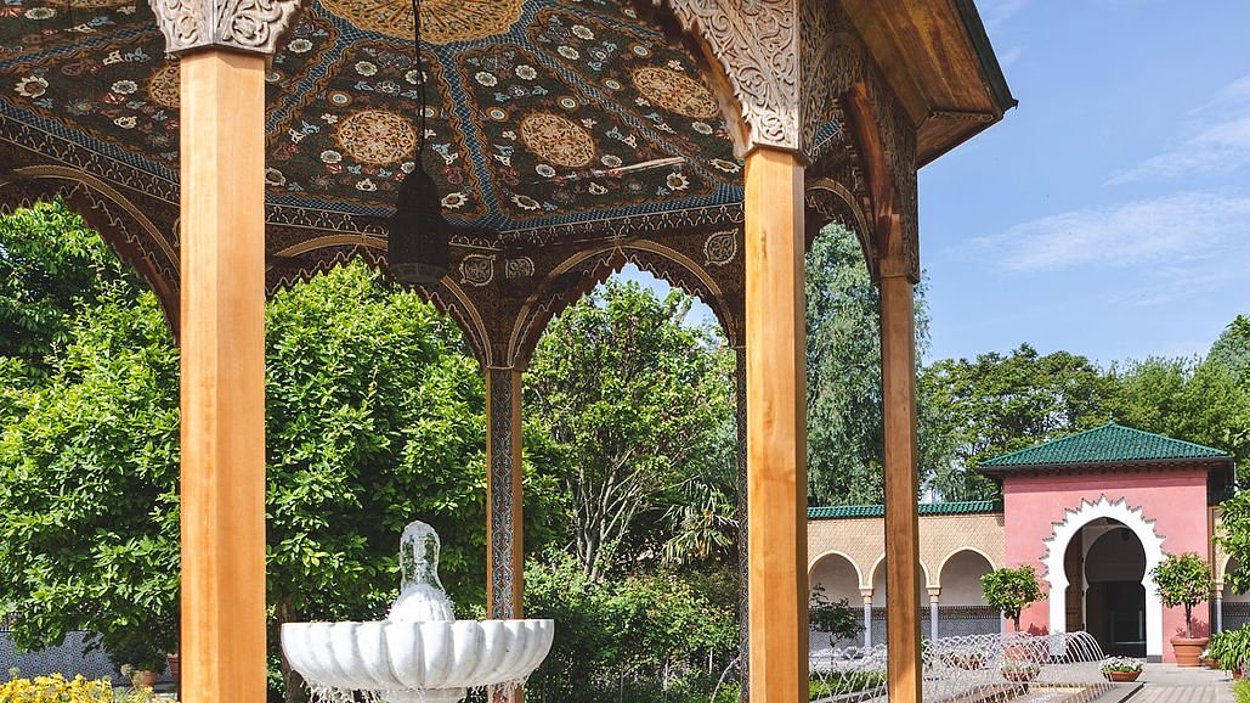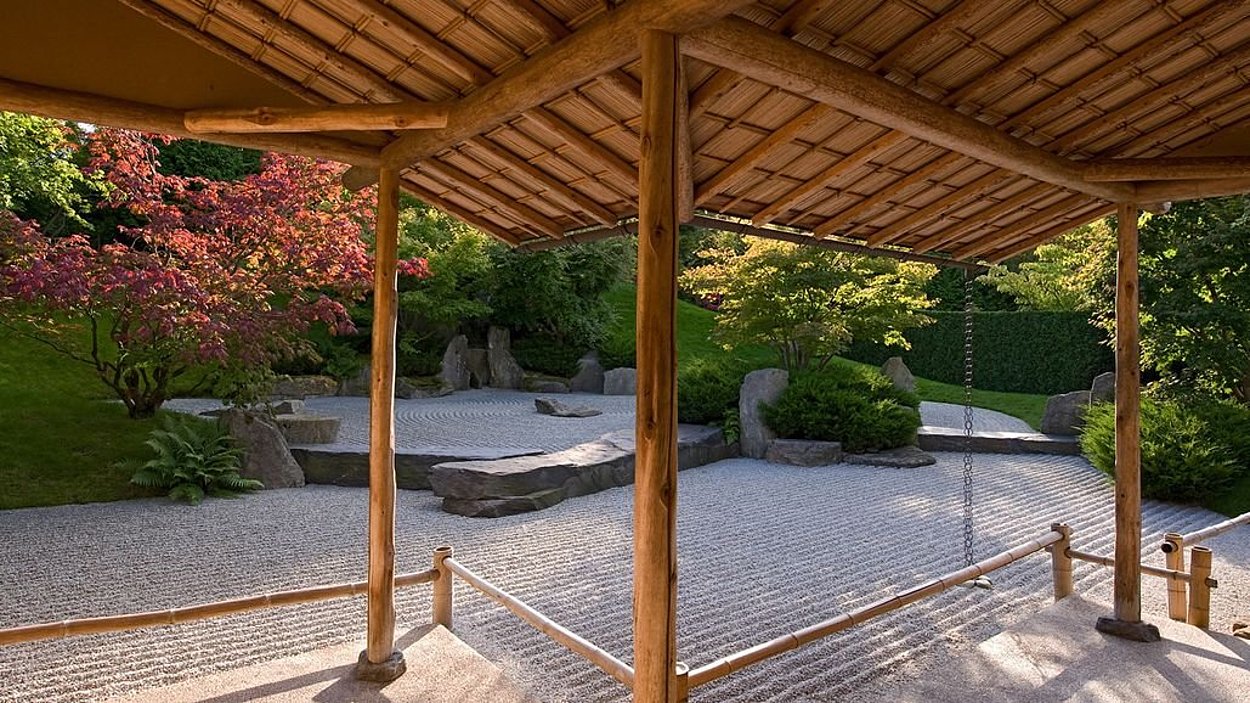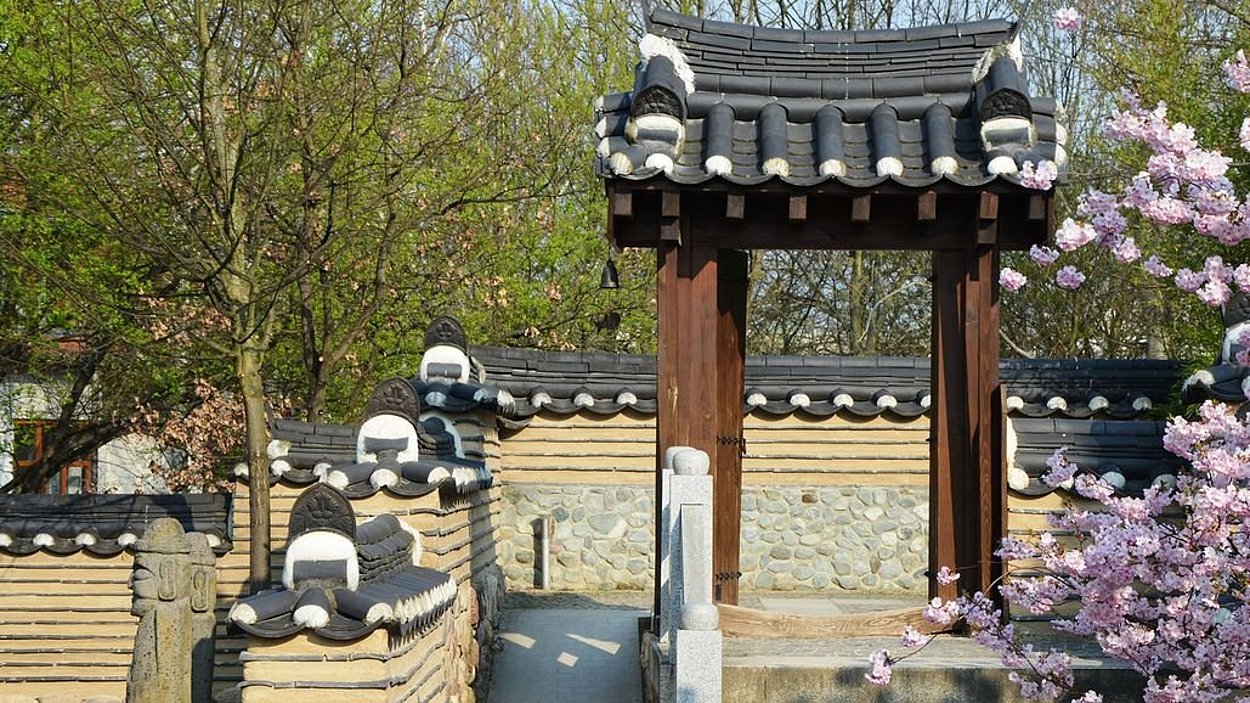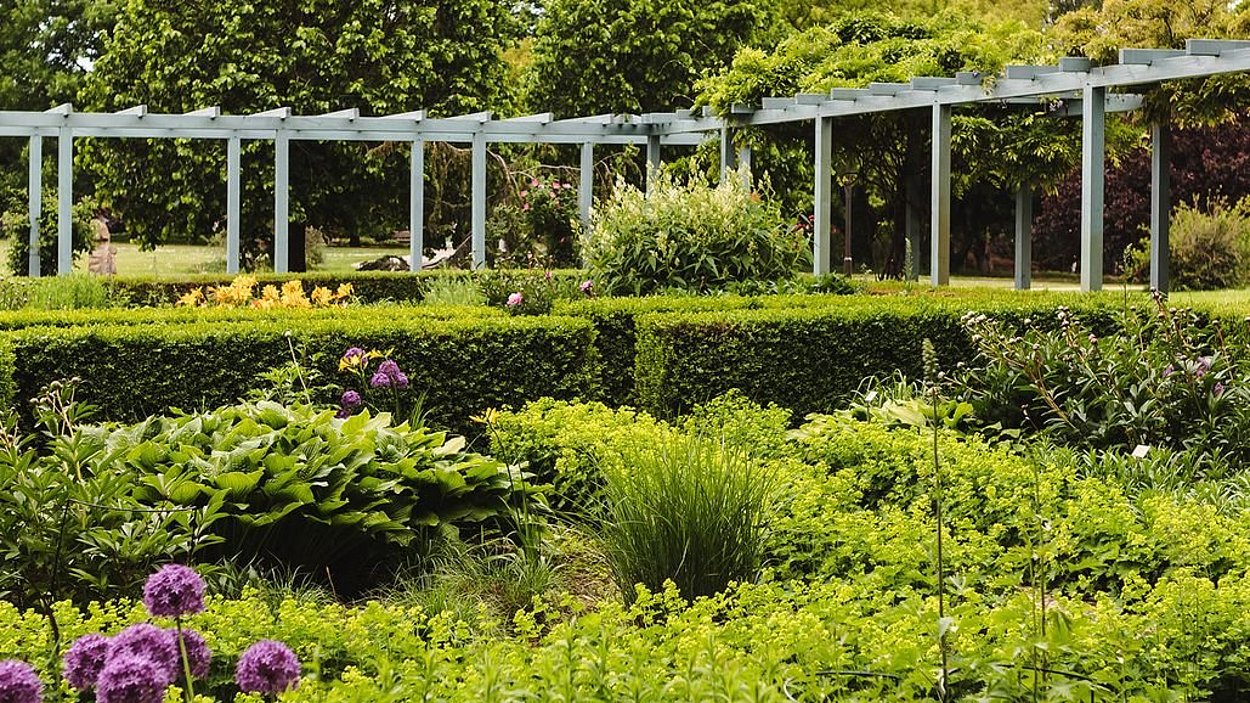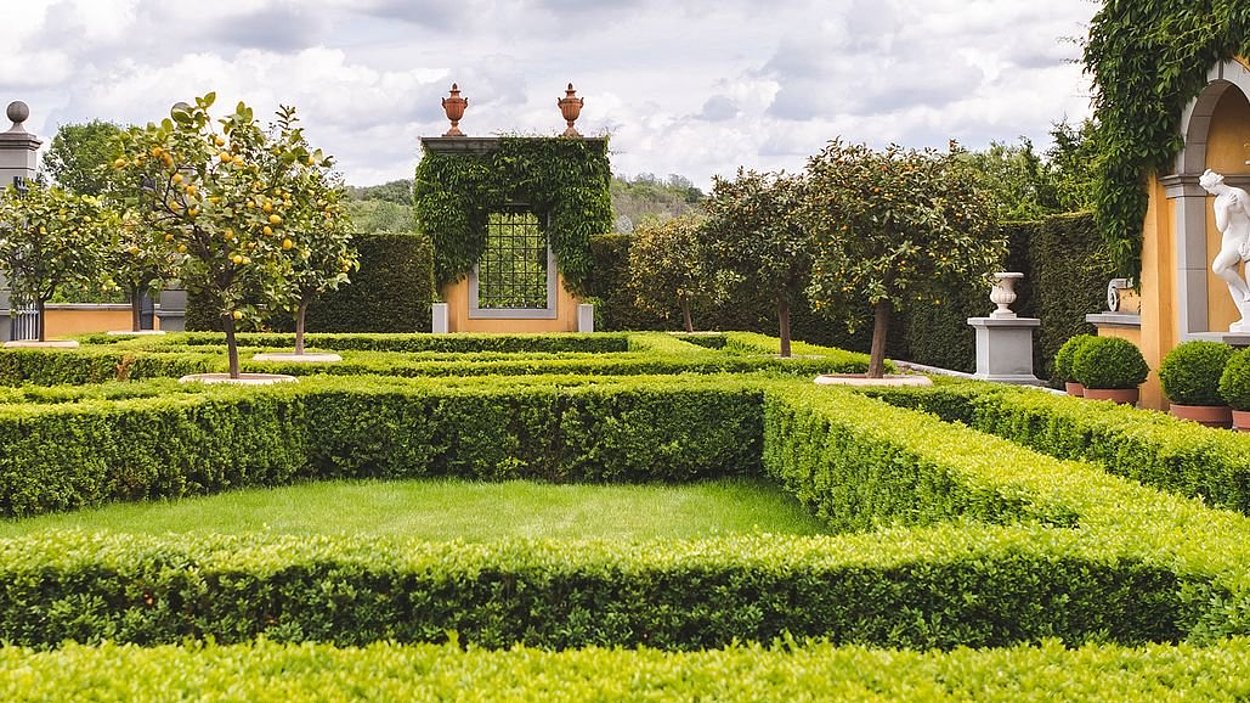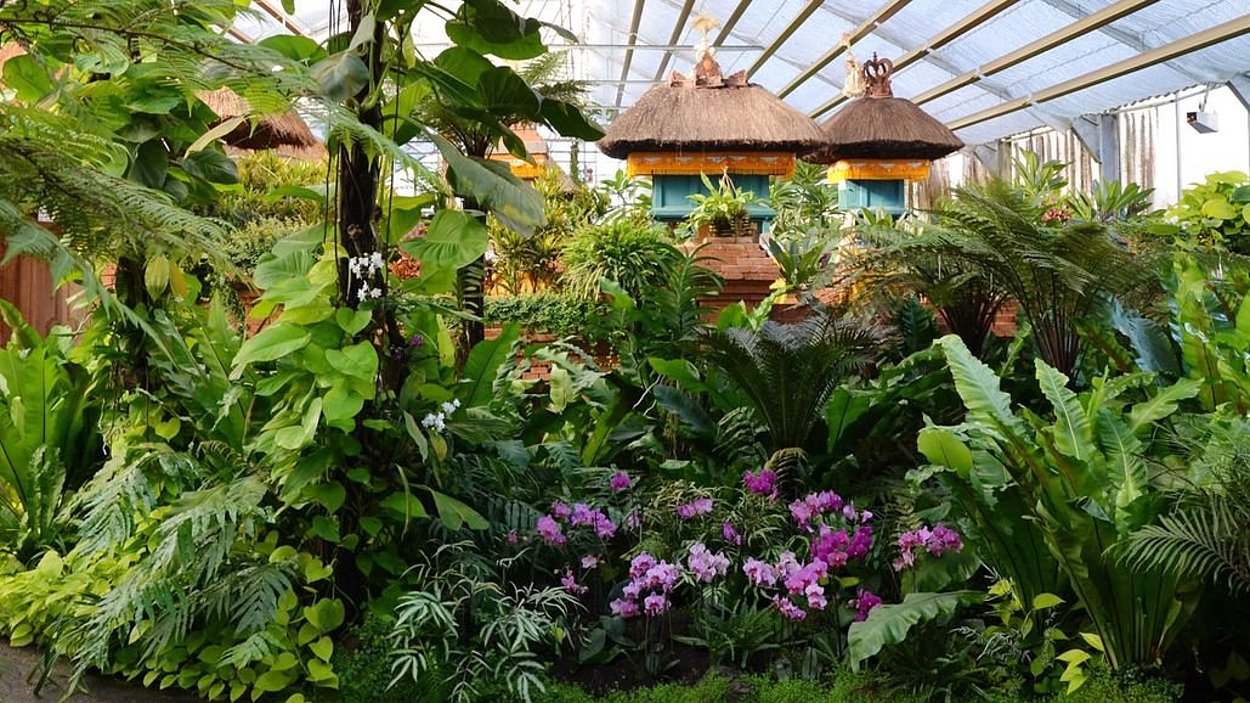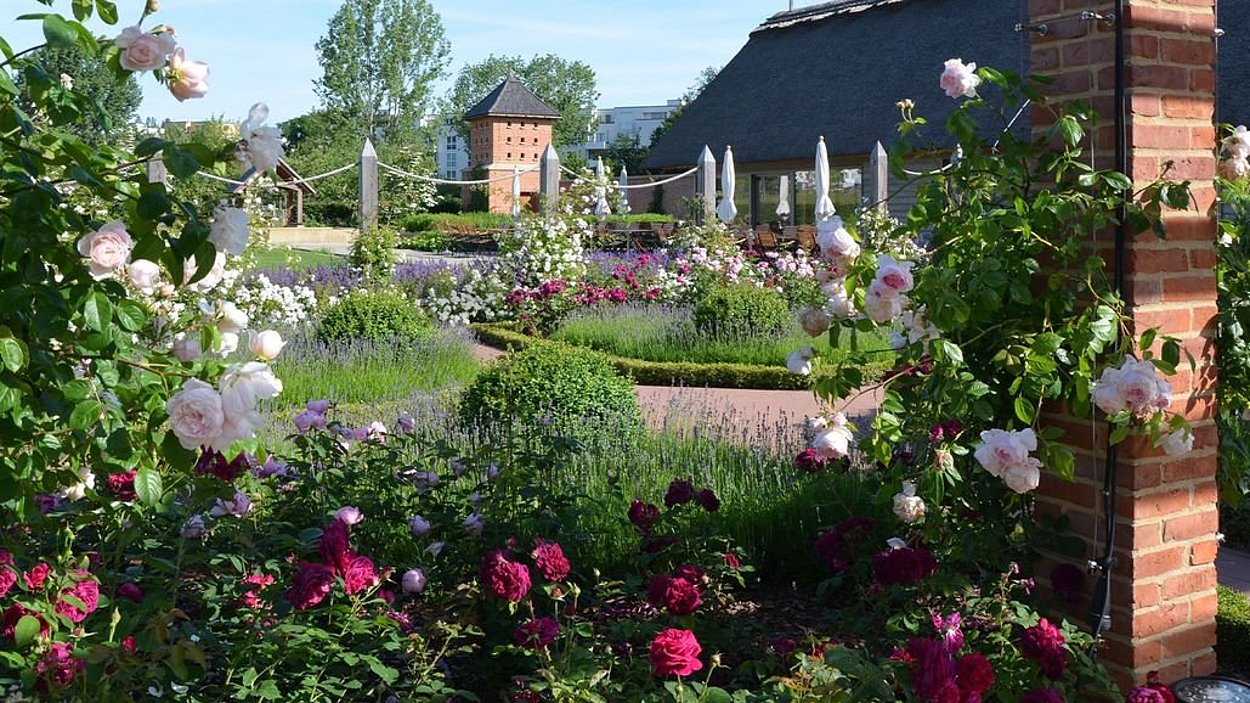Jewish Garden
Meeting in Nature
The presentation of cultural and religious diversity in the Gardens of the World was expanded by an essential element in October 2021. Since then, the Jewish Garden has been located on an area of approx. 2,000 square metres with a view of the neighbouring Christian Garden. It complements the existing theme gardens and completes the presentation of the great world religions and world views, especially the monotheistic religions, as a landscape architectural and artistic contribution. The design of the Jewish Garden deliberately avoids superficial symbolism or religious inscriptions.
In the Diaspora, no independent Jewish garden or building culture developed; often a small patch of earth had to suffice, which served self-sufficiency, but on which flowers and ornamental plants as well as plants for ceremonial use were also grown. The Jewish Garden is a continuation of this tradition.
Jewish Garden continues this tradition. Useful and ornamental plants that are part of Jewish life were researched through accompanying research and cultivated in the garden. These include fruit trees, figs, almonds, magnolias, chestnuts and elms. The selected plants are known from novellas, poems, short stories, essays and letters by Jewish authors and authors close to Judaism.
The garden's network of paths is a reference to Jewish culture with its interconnections and international references. Two sculptural pavilions offer an opportunity to rest and can be used as places of exchange.
Opening & Laying of the Foundation Stone for the Jewish Garden
On 19 October 2021, the then Senator for the Environment, Transport and Climate Protection, together with representatives of the Central Council of Jews in Germany and the sponsoring foundations, opened the world's first Jewish Garden in a park as an extraordinary space for encounters, exchange and understanding.
On 24 October 2019, the foundation stone was laid in a festive ceremony. During the ceremony, a capsule with contemporary documents was sunk, which had been personally selected by representatives from politics, foundations and the Jewish Community of Berlin. The prayer said by Rabbi Prof. Dr. Nachama underlined the solemn setting.
From idea to implementation
The initiator for the establishment of the Jewish Garden was the Allianz Environmental Foundation, which had already supported the Oriental Garden (2005) and the Christian Garden (2011) in the Gardens of the World.
In 2018, the State of Berlin, represented by the then Senate Department for the Environment, Transport and Climate Protection and Grün Berlin GmbH, in cooperation with the then Senate Department for Urban Development and Housing, launched the "Artistic Landscape Planning Design Competition Jewish Garden in the Gardens of the World, Berlin Marzahn-Hellersdorf". The jury awarded first prize to the work of the team atelier le balto landscape architects and the artists Manfred Pernice and Wilfried Kuehn. The competition is documented on the website of the Senate Department for Urban Development, Building and Housing.
On the recommendation of the Central Council of Jews in Germany, various representatives of the Jewish Cultural Circle were invited to an expert panel for consultation in the run-up to the competition. This committee accompanied the development of the task as well as the entire course of the competition and was also represented in the competition jury.
The competition and its realisation were supported by the State of Berlin, the Allianz Environmental Foundation, the Axel Springer Foundation and the Deutsche Bundesstiftung Umwelt. Grün Berlin GmbH was responsible for the implementation.
